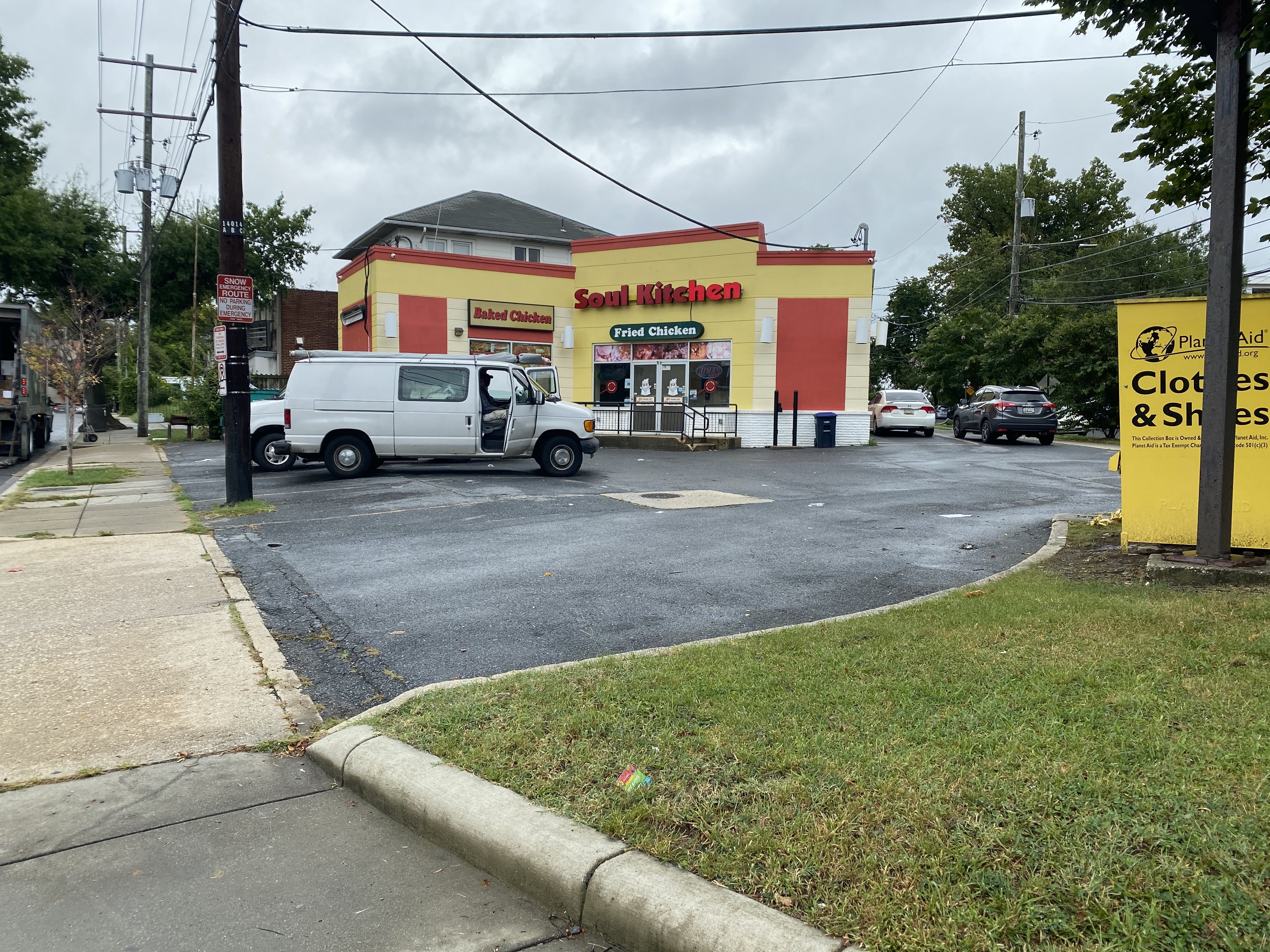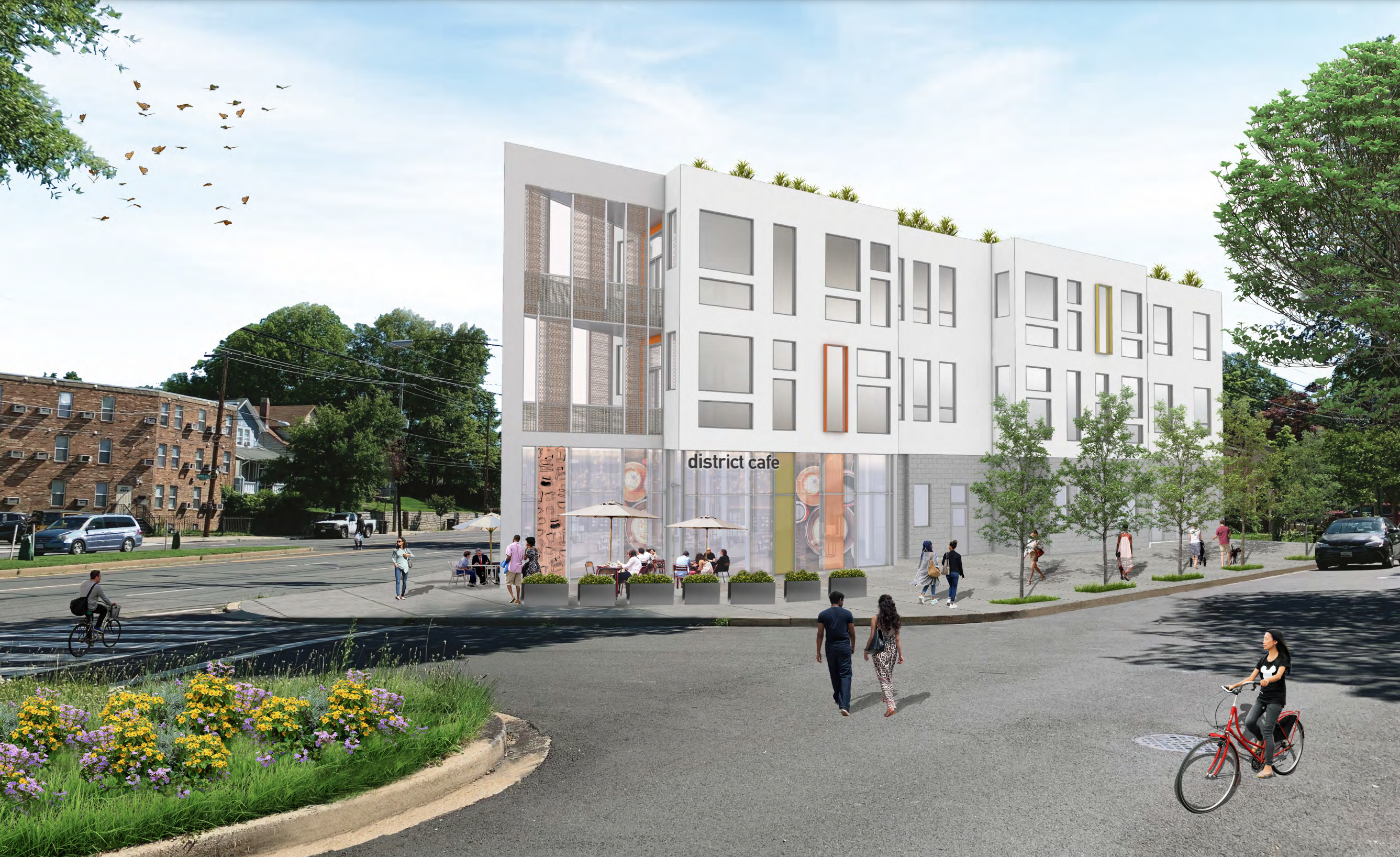tl;dr
- Commissioner Montague is not running again but intends to continue his work, no longer inhibited by public office
- A hit-and-run incident at 18th and Franklin was referred to the MPD Major Crash Unit
- The Soul Kitchen building project plans are still in flux pending some grant awards; a design presentation was pushed to next month’s SMD meeting
- FiveMedicine is a business providing mobile health services to underserved communities, and they’re planning to open a facility somewhere in 5C07 (specifics unavailable)
- The New York Avenue Vision Framework is a project to help assess land-use priorities for NY Ave; the study area involves our SMD
- Various projects and issues related to stormwater/flooding issues and mitigation were discussed
Background
This was a regular monthly meeting of SMD 5C07 held on 9/7/2022 virtually over WebEx, running from roughly 6:30pm to 7:50pm EDT. The most recent previous meeting was held on 8/3/2022.
Original Agenda
As conveyed by Commissioner Montague in the 9/2/2022 email reminder:
- Five Medicine, Certificate of Need Support Application
- 1803 Rhode Island Avenue (BZA 20014B), Application for Modification
- New York Avenue Framework Project
- Casey Trees/Langdon park Extension of Project Letter of Support Request
Report from MPD
Sergeant Shanell Jones of MPD, recently assigned to our area, gave a brief report on crime, which she said was relatively low for our SMD.
Commissioner Montague emphasized that while crime may seem low on paper, there are various issues related to youths on some blocks causing nuisance problems.
I asked Sergeant Jones if she has any updates on the hit-and-run incident that occurred at 18th and Franklin Sts NE on 8/19/22 around 11:15pm, wherein a driver struck a pedestrian with their car and fled the scene. Sergeant Shanell said she was working that night, but she had no details because the case was passed to the MPD Major Crash Unit. She said she could have that Unit send me an update or I could reach out myself; I said I’d reach out.
Detective Jameson Lehn of the Major Crash Unit was seeking camera footage from nearby neighbors related to the incident, so I emailed him for an update. I have not received one as of 24 hours later.
Soul Kitchen building
1803 Rhode Island Ave. NE is the site of a single-story retail building and small surface lot, currently occupied by Soul Kitchen.
Current condition of the the Soul Kitchen site
There have been plans from Addisleigh Park Washington Properties and Upwall Architects to redevelop the site since 2018, and they’ve gone through a few revisions, slowly moving from a three-story retail building to a more standard mixed-use building with eight homes over 1000 square feet of retail.
Most recent renderings for the Soul Kitchen site
This project has gone through multiple zoning cases already; the current BZA case is to extend their time for construction and accomodate the changes in use.
At the meeting, building owner Lenda Washington briefly spoke to inform folks that they will not be presenting on the architectural designs and zoning issues this month, but plan to be back next month. She did discuss broader thoughts on the site:
- The size and shape of the plot make this project hard to develop, which is why the design has been in flux for so long.
- She is waiting on some information about grants that would make the residential component of the project feasible.
- If she can’t secure them, they may eventually pursue a project to simply renovate and expand the retail space that’s there now.
- In any case, she’s hoping to keep Soul Kitchen’s owner as a tenant, possibly with an updated menu.
- She also floated possibilities for a small grocer (comparable in size to the RIA location of Good Food Markets) with limited farm-sourced produce, and rotating food vendors.
- She’s also discussed with RIA Main Street the possibility of using the parking lot for a Farmers Market
FiveMedicine
Dr. Kelsey Ball Fomengia, Director of Behavioral Health at FiveMedicine, gave a presentation on the company. FiveMedicine is an integrated healthcare company that provides health services to underserved communities. They started in 2018, and grew a lot starting in 2020, providing COVID testing (and later vaccinations) primarily in Wards 5, 7, and 8. They also partner with organizations to provide mobile healthcare clinics on-site, bringing healthcare services into neighborhoods.
The company is seeking a Certificate of Need, which is a requirement for opening a health service establishment in DC. Dr. Fomengia was not able to share details on where in 5C07 they are seeking to open a location or what the nature of the location will be, and directed us to contact the CEO or Director of Operations for that information.
I emailed both and am still waiting to hear back on that as of 24 hours later. While the organization does seem great, it’s not particularly clear what their nexus is with 5C07 at this time.
New York Avenue Framework Project
DC’s Office of Planning (OP) began its New York Avenue Vision Framework effort with a kickoff meeting last week. The project “focuses on improving quality of life for residents, planning for housing and jobs along the corridor, and ensuring there is adequate infrastructure” and will include several meetings and community walkabouts along New York Avenue from Brentwood Rd to South Dakota Ave NE. The broader project target region includes all of the new 5C07 (the boundaries that will take effect in January).
NY Ave Vision Framework study area
This is one of several efforts to interpret the revised Comprehensive Plan and prepare to rewrite the Comprehensive Plan in the coming years.
Ryan Hand and Alexis Robinson of OP were on the meeting, with Ryan Hand principally presenting. The presentation was similar to that given at their kickoff. The floor was then opened for residents to ask questions.
Some topics that were discussed from resident questions:
- A need for MPD involvement: One resident was concerned that MPD was not being involved, and that they have inputs related to traffic management on the corridor. Mr. Hand emphasized that they were working closely with DDOT on the project, but are open to MPD input as well.
- A need to plant and preserve trees: One resident mentioned that walking along NYA is especially unpleasant due to a lack of tree canopy. She also raised the issue of some existing mature trees on DC-owned patches that she hope wouldn’t be developed on. Mr. Hand was very enthusiastic on sharing their techniques for mapping out tree-planting along New York Avenue in the public realm that exists between the street and any buildings. They will also be looking closely at arborist techniques for nurturing thriving trees on similar urban arterials. They will also be identifying existing mature trees they can integrate into plans for preservation.
Commissioner Montague then provided his own commentary, emphasizing that he doesn’t believe New York Avenue can be significantly changed, though he listed several changes and did not discount any as being individually impossible. He emphasized a few factors, including:
- New York Avenue’s designation as a federal highway, Route 50 (similar to Rhode Island Avenue’s Route 1 and Georgia Avenue’s Route 29 designations)
- New York Avenue’s status as a major trucking route
- New York Avenue’s status as a major evacuation route
- He also mentioned this was true of other arterials such as Rhode Island Ave and South Dakota Ave
my take
switching from facts/events to opinion
I believe we are an adaptable city, country, and species. New York Avenue was only extended past Florida Ave to Bladensburg Rd in 1931, and to the Maryland border in 1954. This New York Avenue is not something that’s always been; it’s a blip in history. Changing it is not only possible, but critically necessary.
I think anyone attempting to traverse New York Avenue knows the area is made oppressive and unlivable by through traffic and car priority. I believe these projects are an opportunity to rebuild this corridor with an urban fabric and less accomodation of vehicular traffic, and that this is essential for making communities along NYA places people can live, work, and enjoy being.
Each of the Commissioner’s specific points implies some bounded “inside” and “outside” to the city where our neighborhoods serve as some high-speed throughway from one to the other, whether it be commuters and trucks from outside to inside or evacuees from inside to outside. I believe our neighborhoods are inherently fit to be upgraded to part of that “inside,” and this would only be possible by shrinking the capacity of our arterials to carry individual vehicles at higher speeds to farther distances, while increasing their capacity to carry people to places.
For instance, a realistic evacuation plan for the city would not involve maximum exodus of individual vehicles; it would involve abandoning all but the highest-capacity vehicles and allowing those high-capacity vehicles swift departure with as many people as possible, such as on protected, dedicated bus lanes. It may also involve facility capacity somewhere between Florida Ave and Eastern Ave for folks closer to the center of town to evacuate to. It’s no coincidence that this is also a more realistic and sustainable model (in reverse) for most future commuters along this corridor.
end of opinion
water issues
There was some talk from Commissioner Montague related to water issues. The agenda item itself was a little confusing and there wasn’t much clarity in the meeting, either, but I think the agenda-related matters can be summarized by some combination of the following:
- The Hamlin Street LID Stormwater Retrofit Project is a project to retain stormwater on the north side of Langdon Park by the pool. It’s currently under construction.
- CaseyTrees did not come to present, but they are working on stormwater retention as one of their projects in the Langdon Park forest patch.
- Commissioner Montague mentioned permits for one or both of these projects were extended; either way, both are in progress but not done.
There was further discussion of water issues. Commissioner Montague mentioned that DC Water had been invited to the meeting, but did not attend. The invite pertained to issues on Mills Ave. with a resident experiencing issues with a spring that was buried pre-1900; there was some confusion as to whether DC Water or the resident had responsibility to mitigate issues brought to light after recent heavy rain.
There are plans for DC Water to present to 5C on easements and underground infrastructure that may not be properly recorded in their maps. Commissioner Montague is helping to properly map these forgotten underground artifacts.
Flooding is a big active issue caused by poorly understood interior flood risk and extremely high rain volumes. I think DCist explains the overarching issue well in this piece.
A key quote for me:
DOEE is currently working on an integrated flood map, that will include interior flood risk, in addition to the flood risk coming from the rivers. It’s a lot of work, and expensive, Bonard says, because it involves understanding and mapping the topography, hydrology and stormwater infrastructure of the entire city.
“If a drop of rain falls on this piece of pavement, where does it go?” Bonard says. “Which catch basin does it flow into? How large are the pipes that it flows into? What other pipes do those pipes connect to?”



